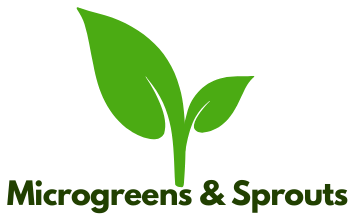White Quinoa
White Quinoa Seeds
White quinoa seeds are small, round, and ivory-colored seeds from the Chenopodium quinoa plant. Known for their mild, nutty flavor and crunchy texture, they are popular for sprouting due to their high nutritional value and ease of growth. Sprouted white quinoa offers a tender crunch and is often used in salads, sandwiches, and various dishes.
History of the Seed
Quinoa has been cultivated for over 5,000 years in the Andean region of South America, primarily in countries like Peru and Bolivia. It was a staple food for the Inca civilization, revered as a sacred grain. Its popularity has grown worldwide due to its impressive nutritional profile and versatility.
Nutritional Information (per 100g raw quinoa seeds)
- Calories: 368 kcal
- Protein: 14.1 g
- Fat: 6.1 g (mostly unsaturated)
- Carbohydrates: 64.2 g
- Fiber: 7 g
- Vitamins: B-complex (B1, B2, B3), Vitamin E
- Minerals: Magnesium, Iron, Phosphorus, Potassium, Zinc
Nutrition Benefits
- Complete protein source containing all nine essential amino acids
- High in dietary fiber aiding digestion
- Rich in antioxidants that help reduce inflammation
- Gluten-free and suitable for people with gluten intolerance
- Supports heart health through healthy fats and minerals
- Helps regulate blood sugar levels
Sprouting Process and Directions
Soak Time
Soak white quinoa seeds in filtered water for 2 to 4 hours.
Rinse Time
Rinse thoroughly with fresh water 2 to 3 times daily during sprouting.
Growing Time
Sprouts develop fully within 2 to 4 days under optimal conditions.
Harvest Time
Harvest when sprouts reach about 1 to 1.5 inches (2.5 to 4 cm) in length, typically on day 3 or 4.
Yield
From 1 cup of dry seeds, expect approximately 2 to 3 cups of fresh sprouts.
Days to Sprout
Quinoa seeds typically begin to sprout within 24 hours, with full sprouts ready by day 3 or 4.
Best Growing Methods
- Use a wide-mouth jar or sprouting tray for adequate air circulation.
- Keep the seeds at room temperature (68°F to 75°F or 20°C to 24°C).
- Avoid direct sunlight; indirect light helps maintain chlorophyll development after initial sprouting.
- Rinse and drain seeds well to prevent mold growth.
Storage
Store harvested sprouts in a sealed container in the refrigerator. They remain fresh for 3 to 5 days. Rinse before use to maintain freshness.
Using the Ready Sprouts
- Add raw to salads, sandwiches, and wraps.
- Mix into smoothies for extra nutrients.
- Lightly sauté or steam as a side dish.
- Use as a topping on soups or grain bowls.
Helpful Tips
- Use organic quinoa seeds specifically labeled for sprouting to avoid contamination.
- Avoid over-soaking; prolonged soaking can cause fermentation or spoilage.
- Ensure thorough rinsing after each soak to maintain freshness and avoid mold.
- If sprouts smell off or slimy, discard and start fresh.
Did You Know?
Quinoa is technically a seed but often called a “pseudo-cereal” because it cooks like a grain. Its sprouted form increases nutrient absorption by breaking down antinutrients like saponins and phytic acid naturally present in the seed.
